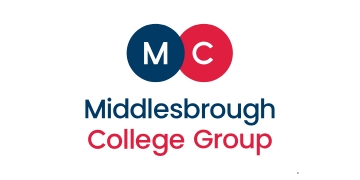Have you ever sat to the end of a film in the cinema, and seen the hundreds of people involved in bringing it to the screen?
Each plays their part in the production, just as crucially as the lead actors.
When we talk about schools, we talk a lot about teachers. As some of the most visible people in schools it’s understandable, but they are not the only ones who make the magic of education happen.
You can have your Anthony Hopkins and Michelle Yeohs in the classroom, but without the army of colleagues in roles outside of parents’ and pupil’s gaze their potential is severely limited.
This blind spot can grow all the greater when it comes to discussion of school finance. Too often, talk about top-slicing and GAG pooling takes place in a strange bubble that risks assuming that the estates staff who keep our buildings running and finance staff who pay the bills (and our wages) work for free.
Trust have legal duties to publish accounts that far outstrip anything in maintained schools. This increased transparency has rightly brought focus on value for money. But it hasn’t been accompanied by a shift in thinking that recognises that trusts deliberately work differently, including how they budget.
The national funding formula has helped reduce wide discrepancies in funding across the country, but that doesn’t make it perfect. A formula can only go so far. Trusts have a deeper and visceral understanding of the needs of their schools, and the flexibility they have to budget accordingly is a tremendous strength.
Rather than assuming a cold, statistical uniformity, trust budgets can reflect schools’ collective real-life needs, supporting each other through blips in pupil numbers, long-term building projects or joint work on curriculum or teacher development.
True transparency is nuanced and informed
Trusts bring together schools in a single organisation. They offer the potential to work together in wide-ranging and flexible ways, with deep and shared understanding of common challenges and goals. Accounts and budgets should be ways to help manage those needs, not to constrain them.
Schools Week’s recent investigation confirmed that local authorities have long charged a type of ‘top slice’ to maintained schools to pay for shared services. At the other end of their budget sheets, these schools frequently buy services from council trading firms or joint ventures.
Some commentators would have you believe this must mean that money is being “funnelled into the pockets of a handful of education profiteers“. The reality is it doesn’t make councils the baddies, any more than it does trusts.
Whether upfront charges in a trust or local authority levies squirreled away in schools forum minutes, this is still money that is ultimately aimed at making life in the classroom better.
But these two different systems, and the wide flexibility that trusts have to shape their structures and finances to match the unique needs of their schools, make comparisons difficult.
We get strange arguments talking about an “average top slice” or claims of money being “shaved off” budgets without any meaningful comparison of what that money pays for in each circumstance. Transparency is important, but true transparency is nuanced and informed.
We understand that a sci-fi film and a historical drama might have inverse special effects and costume budgets, because they have different needs. In the same way, spending between trusts will differ because they have differing challenges and differing needs.
Any fair comparison needs to look at the detail and the resulting outcomes for children, not just the names of rows in the accounts.
There is plenty of evidence that trusts are improving education, including their positive impact on previously underperforming schools. This is one reason why they’re now playing an integral role in the government’s RISE programme.
So next time you hear someone complain that schools are ‘losing money’ for shared costs, stay to the end of those metaphorical credits, and think about every single person and activity involved in making a school succeed.
All schools, regardless of type, have real and vital costs beyond the classroom; we should always remember that we depend on each other to ensure our children succeed.












In my experience trusts seek ‘value’ from hammering the low paid membrs if staff. First to be scrapped when budgets are tight, tying wages to the floor wherever possible and penny pinch in terms of hours if they can.
This article is misleading. Maintained school Governors have to approve each year the purchase of services from Local Authorities, and they see the cost of each one. In MAT’s funding decisions are made centrally, not at school level. As Schools Week reported on 28 April, GAG-pooling by some MAT’s substitutes their own criteria (which they don’t have to publish) for the national funding formula which all LA’s will soon have to follow. So the DfE’s published school budgets will be accurate for LA schools but notional for Academies.